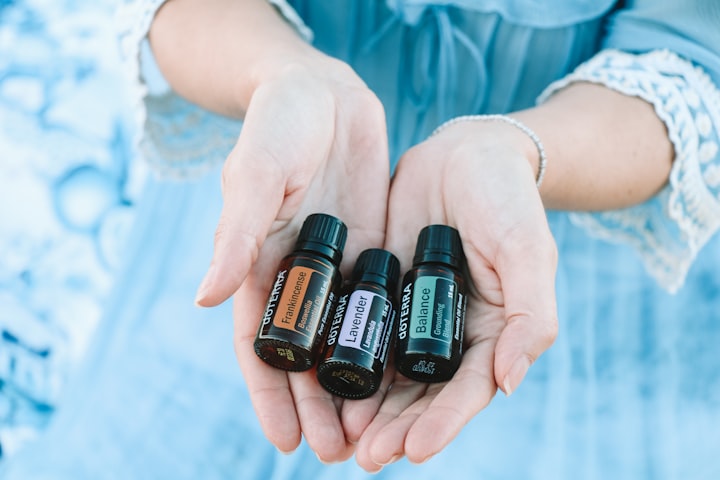The Different Uses Of Essential Oils
A Complete Beginner's Guide

Introduction
Essential oils are versatile and have a variety of uses. In this guide, we will explore the different ways you can use essential oils.
It has been estimated that there are approximately 3,000 different types of essential oils; all with their own unique aroma and properties.
However, the oils may be used for a variety of purposes including aromatherapy, cooking, cleaning, or medicinal purposes. This article provides a list of the most common uses for essential oils.
What Are Essential Oils Used For?
Essential oils are used for a variety of reasons, including aromatherapy, skincare, and cleaning. Some essential oils are also used in traditional medicine.
Essential oils have been used for thousands of years to promote health and wellness. Some essential oils are a great way to turn a negative situation into a positive one. These natural oils can be used as an effective therapy for everything from illness to anxiety.
Essential oils are non-toxic, so they can be used safely with anyone including children, pregnant women, and people with certain conditions like epilepsy.
The Benefits of Essential Oils
There are many benefits to using essential oils, both internally and externally. Many essential oils have been shown to be effective in treating a variety of issues, from anxiety and depression to skin conditions and respiratory problems.
Some essential oils also have potent antioxidant properties, which can help protect the body against damage caused by free radicals.
It’s no secret that essential oils are popular. The aromatherapy benefits of these natural oils are well-documented and, more importantly, they offer tangible health benefits that can drastically improve our lives.
Research has shown that some essential oils can be used to alleviate pain, boost immunity, fight stress, and even help with mood disorders like anxiety and depression.
How Are Essential Oils Made?
Essential oils are made by extracting the oil from plants. Different plants produce different oils, and some oils are more difficult to extract than others. Some of the most common methods for extracting are as stated below.
1. Steam distillation- The steam distillation of essential oils is a process used to extract aromatic compounds from plant material. Steam distillation involves heating up the plant material and collecting the steam that comes off. The steam is then cooled and condensed back into the water, which is collected at the bottom of the procedure. This process leaves behind a more concentrated oil than some other methods such as cold pressing or solvent extraction.
2. Cold pressing- Cold pressing refers to the technique of using a hydraulic press to extract oils from plants by slowly pressing the plant matter into the perforated metal. The extraction process is slow and tedious, but yields high-quality oils without heating or applying any chemicals.
3. Chemical extraction- The essential oil is made by extracting the aroma of plant material using a solvent. This process works by capillary action drawing the liquid up the material where it is extracted by the solvent. The solvent can re-evaporate leaving behind an oil with no residual solvents present, or it can be left on top of the plant material in which case it leaves behind a residue that can be used as a thickener for cosmetics and perfumes.
How to Use Essential Oils
Now that you know what essential oils are, and what they can do, it's time to learn how to use them. There are many ways to use essential oils, and each one has its own benefits. Here are four tips for using essential oils:
1. diffuse them in the air - diffusing essential oils into the air is a great way to enjoy their benefits all-around your home. Just make sure that you're using a safe diffuser, and avoid using them near children or pets.

2. use them in a traditional burner - using essential oils in aromatherapy with a burner is another option whereby a candle is lit and placed under the burner. Then we pour some essential oil over the hot burner top surface and enjoy the scent floating in the air.
3. use them topically - applying essential oils topically can help relieve pain, improve skin conditions, and decrease inflammation. Just make sure that you're using a safe carrier oil, and avoid using essential oils near your eyes or other sensitive areas.
4. use them in food - adding essential oils to foods can help enhance their flavor and add health benefits. Just be sure to consult with your food manufacturer before adding essential oils to your food!
5. Scented Candles -Scented candles can provide a source of relaxation and tranquility for those seeking to unwind and take the time for themselves. The heat from burning scented candles can help to increase circulation and create a sense of warmth within the body, which may result in a reduction of stress levels. Pheromones found in scented candles may also trigger calming emotional responses such as lowered anxiety and increased mood.
Essential oil profiles
1. Peppermint- Peppermint essential oil is derived from the leaves of the peppermint plant Mentha X Piperita. It has a scintillating, refreshing, cool aroma with notes of menthol and camphor.
It can be irritating to the skin on some people because it contains menthol which may cause skin irritation. Peppermint essential oil has many benefits for health. It can relieve nasal congestion, provide relief from menstrual cramps, headaches, arthritic pain, and muscle spasms.
2. Thyme- Thyme is an essential oil derived from the leaves of the Thymus vulgaris plant. The aroma that it produces is reminiscent of lemon, yet also has a spicy note to it that reminds one of ginger.
One may also detect woodsy notes to this oil, which are due to its high content of terpenoids, which are responsible for its scent. This oil has been used for centuries in cooking to impart a lemon flavor without adding artificial flavorings or preservatives.
3. Lavender- Lavender is a perennial plant in the mint family. Oil distilled from the flowers is used for their aromatic qualities. It has a fresh, herbaceous, floral aroma with camphoraceous undertones. It is said to be calming and relaxing, as well as balancing skin irritations. Lavender promotes healthy cell regeneration and can help relieve headaches.
4. Eucalyptus- Eucalyptus essential oils are derived from the eucalyptus tree and have a camphoraceous scent. Eucalyptus is a known decongestant, which means that it helps to break up congestion in the chest or sinuses. For this reason, aromatherapists often recommend it for coughs and colds.
5. Lemon- Lemon essential oils are a very effective antibacterial agent, which has been known to help with stomach issues. The lemon essential oil has a sharp, tangy smell and can be used in a diffuser for a refreshing scent in the room. The combination of lemon and eucalyptus provides a powerful cleansing effect on the immune system, clearing out toxins to fight off illness.
6. Grapefruit- Grapefruit essential oil is a very popular and common essential oil, produced from the peel of the grapefruit. It has a strong citrus smell, and it is typically used for aromatherapy. Grapefruit essential oil can be found in many commercial products like detergents, toothpaste, and even makeup. The chemical compounds that give grapefruit its aroma are called terpenes. These terpenes come from both the peel and seeds of the grapefruit fruit.
7. Tea Tree- Tea tree essential oil is obtained from the leaves of Melaleuca alternifolia, a small tree native to Australia. It has a refreshing, camphoraceous-sweet aroma with a sharp and penetrating character. It is an excellent choice for soothing oily skin and acne, supporting respiratory health, and treating fungal infections such as athlete’s foot.
Conclusion
In conclusion, essential oils are an all-natural way to relieve stress, promote well-being, and create a sense of calm in the home. They are also great for the environment!
Essential oils can be used to help you unwind after a long day at work, or to soothe an upset stomach. They are also great because they have no side effects, unlike many medications. You can purchase essential oils online or at your local health food store.
Essential oils are a great addition to your daily life. We hope this guide has helped you learn more about the different ways to use essential oils!
About the Creator
Lanz Jalal
I am a professional photographer, a foodie, a blogger, and a Singapore local Google guide. I love capturing the little details in life that make it worth living.






Comments
There are no comments for this story
Be the first to respond and start the conversation.